Varicose Veins Treatment in Singapore
Varicose Veins Treatment
Wondering about varicose veins treatment options in Singapore? Are visible, aching veins on your legs causing you discomfort and embarrassment?
Many people live with discomfort, swelling, or visible veins without realising they may have varicose veins. Left unmanaged, varicose veins can worsen over time. If you’re unsure whether your symptoms are a sign of something more serious, you’re in the right place.
At the Vascular & Interventional Centre in Singapore, our specialists take a patient-first approach, offering personalised care and expert guidance on your varicose veins treatment path.
WHAT is it
What Are Varicose Veins?
Varicose veins are enlarged, twisted veins that appear raised above the skin’s surface, typically blue or purple in colour. They occur when valves within your veins become weakened or damaged, causing blood to pool rather than flow efficiently back to your heart. This pooling creates pressure that stretches the vein walls, resulting in the characteristic bulging appearance.
Both conditions commonly affect the legs and feet, where gravity makes it more challenging for blood to return to the heart. However, varicose veins can also develop in other areas of the body, including the pelvis and rectum (haemorrhoids).
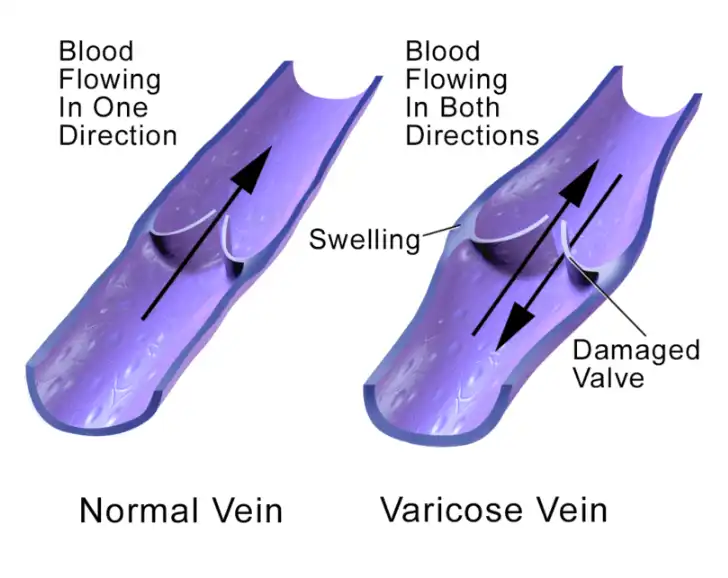
Key Differences Between Varicose Veins and Spider Veins
The primary distinctions between these two conditions lie in their size, appearance, and potential health implications. Varicose veins are typically larger than 3mm in diameter and protrude noticeably from the skin’s surface. They often cause symptoms such as aching, heaviness, cramping, and swelling in the affected legs.
Spider veins, conversely, are usually less than 1mm in diameter and appear as flat, thin lines or web-like patterns on the skin. They rarely cause discomfort, though some patients report mild burning or itching sensations.
Understanding these differences helps determine whether you require medical intervention or cosmetic treatment, which directly impacts your treatment options and potential insurance coverage.
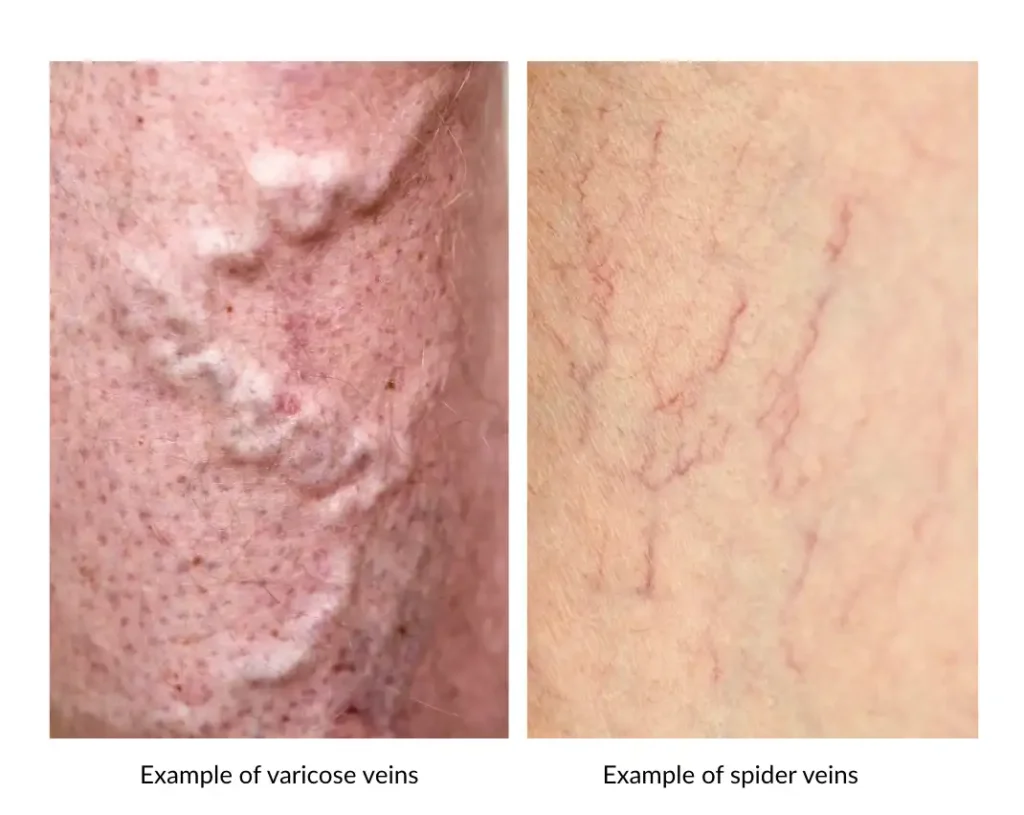
Why Varicose Veins Appear: Causes and Risk Factors
Faulty vein valves cause blood to pool instead of flowing back to the heart, leading to vein enlargement over time.
Primary factors contributing to the development of varicose veins are:
Genetic predisposition
Plays a big role—if your parents or grandparents had varicose veins, you’re more likely to develop them.
Ageing
Is a primary risk factor, as vein walls and valves naturally weaken over time.
Hormonal changes
During certain periods like menopause can relax vein walls.
Occupational factors
Such as prolonged standing or sitting can increase risk, as can obesity, which places additional pressure on your leg veins.
Pregnancy
Deserves special mention as it increases blood volume whilst hormones relax vein walls, and the growing uterus can compress major veins. Whilst pregnancy-related varicose veins sometimes improve after delivery, they often persist or worsen with subsequent pregnancies.
SYMPTOMS
Varicose Veins Symptoms and When to Seek Help
Recognising varicose veins symptoms early can reduce complications and improve treatment outcomes. Many people focus solely on visible changes, but varicose veins often cause symptoms before they become cosmetically apparent.
Common symptoms include aching or heavy feelings in your legs, particularly after prolonged standing or sitting. You might experience muscle cramps, burning or throbbing sensations, and swelling around your ankles and feet. These symptoms typically worsen throughout the day and may improve when you elevate your legs or walk around.
Some patients notice their symptoms fluctuate with weather changes, hormonal cycles, or activity levels. Women often report increased discomfort during menstruation or pregnancy. If you’re experiencing any of these symptoms, even without visible veins, it’s worth consulting a vascular specialist for proper evaluation.
Pain isn’t always present with varicose veins, which is why many people delay seeking treatment. However, untreated varicose veins can lead to more serious complications, including blood clots, skin changes, and ulcers
Noticeable vs. Less Visible Symptoms of Varicose Veins
Visible symptoms of varicose veins include:
- Bulging, rope-like veins
- Blue or dark purple veins
- Swelling in legs or ankles
- Skin discolouration or dryness
Less obvious symptoms are often much harder to attribute than noticeable ones. These include:
- Aching or heaviness in the legs
- Cramping or restless legs
- Burning or throbbing sensations
- Itchy skin over affected veins
Recognising both visible and subtle signs helps ensure you seek appropriate treatment before complications develop
When Are Varicose Veins a Medical Concern?
Whilst many people view varicose veins as purely cosmetic, they can indicate serious underlying circulatory problems. Seek immediate medical attention if:
- Symptoms worsen over time
- Skin changes or ulcers develop
- You experience persistent pain or swelling
- There’s a sudden hardening or discolouration
Other concerning signs include rapid swelling in one leg, skin colour changes, or if your varicose veins feel warm and are tender to touch. These symptoms might indicate complications such as blood clots or chronic venous insufficiency.
Even without alarming symptoms, it’s advisable to consult a vascular specialist if your varicose veins interfere with daily activities, cause persistent discomfort, or affect your quality of life. Early intervention often leads to better outcomes
PROCESS
Diagnostic Process of Varicose Veins in Singapore Clinics
Professional diagnosis of varicose veins involves more than visual examination. At the Vascular and Interventional Centre, our varicose veins screening encompasses a comprehensive diagnostic approach to identify the root cause of your symptoms and develop the most effective treatment plan.
The diagnostic process begins with a detailed medical history and physical examination. Your doctor will ask about your symptoms, family history, lifestyle factors, and any previous treatments you’ve tried. They’ll examine your legs whilst you’re standing to assess the extent and pattern of your varicose veins.
Modern diagnostic techniques allow us to see beyond surface symptoms to understand the underlying venous system dysfunction. This comprehensive approach is crucial because visible varicose veins often represent only a small portion of the overall problem.
Advanced imaging techniques help identify which veins are functioning properly and which require treatment. This information guides treatment selection and helps predict outcomes, ensuring you receive the most appropriate intervention for your specific condition.
What to Expect During Your Consultation
Your initial consultation typically lasts 30-45 minutes and includes both discussion and examination components. Come prepared to discuss your symptoms in detail, including when they occur, what makes them better or worse, and how they impact your daily life.
Wear loose, comfortable clothing that allows easy access to your legs. You’ll likely be asked to stand and walk so your doctor can observe how your veins behave under different conditions. Don’t feel embarrassed about the appearance of your legs—vascular specialists see these conditions daily and are focused on helping you feel better.
Your doctor will explain their findings in terms you can understand and discuss treatment options appropriate for your situation. This is an excellent opportunity to ask questions about different treatments, recovery times, and costs.
Scans and Imaging: Are They Necessary?
Duplex ultrasound scanning (such as an ultrasound venous reflux scan) is the gold standard for diagnosing venous insufficiency and planning varicose veins treatment. This painless, non-invasive test uses sound waves to create detailed images of your veins and assess blood flow patterns.
The scan typically takes 15-30 minutes and involves applying gel to your legs whilst the doctor moves a small probe over the affected areas. You might be asked to perform simple movements like flexing your calf muscles to assess how well your vein valves are working.
Imaging is essential for effective treatment planning because it reveals the full extent of venous insufficiency, including problems in deeper veins that aren’t visible on the surface. This information helps determine whether you need treatment for underlying causes or just surface veins, impacting your treatment plan and long-term outcomes.
Treatment OPTIONS
Available Varicose Vein Treatments in Singapore
Singapore offers a comprehensive range of varicose veins treatment options, from conservative management to advanced minimally invasive procedures. The key to successful treatment lies in matching the right procedure to your specific condition, symptoms, and lifestyle requirements.
Modern varicose veins treatment has evolved from traditional surgical approaches. Today’s minimally invasive techniques offer excellent results with reduced pain, shorter recovery times, and better cosmetic outcomes. Most procedures can be performed in an outpatient setting under local anaesthesia.
Treatment selection depends on multiple factors including the size and location of affected veins, severity of symptoms, your overall health, and personal preferences regarding downtime and recovery. Our specialists take time to explain each option’s benefits and limitations, helping you make a better decision about your care.
The goal of any varicose veins treatment is to eliminate symptoms, improve circulation, and prevent complications whilst achieving the best possible cosmetic result. With proper treatment selection and execution, most patients experience symptom improvement and are satisfied with their aesthetic outcomes.
Minimally Invasive Varicose Veins Treatment Options
These minimally invasive procedures typically require little to no downtime and can be performed in a clinic setting.
Endovenous Laser Abalation (EVLA)
Endovenous laser ablation (EVLA) uses laser energy to seal problematic veins from the inside. A thin laser fibre is inserted through a small puncture, and controlled heat closes the vein permanently. Blood automatically reroutes through healthy veins, eliminating symptoms whilst improving circulation.
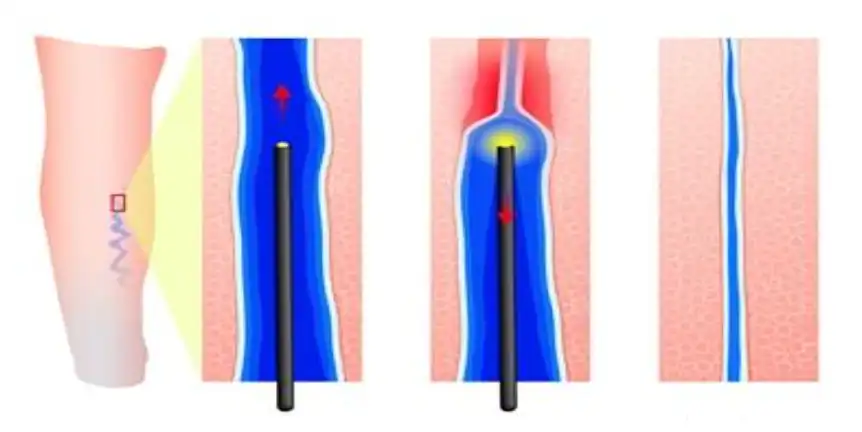
Radiofrequency Ablation
Radiofrequency ablation offers similar benefits to laser treatment but uses radiofrequency energy instead of laser heat. Both techniques achieve excellent long-term results with minimal discomfort and quick recovery times.
VenaSeal™ / VenaBlock Glue
VenaSeal™ / VenaBlock Glue closure system represents the latest advancement in varicose veins treatment, using medical-grade adhesive to permanently seal problematic veins.

Sclerotherapy
Sclerotherapy involves injecting a special solution directly into affected veins, causing them to collapse and eventually disappear. This technique works particularly well for spider veins and smaller varicose veins. Foam sclerotherapy uses a foam version of the solution for larger veins, increasing contact time and effectiveness.
Clarivein™ Mechanochemical Ablation
Clarivein™ Mechanochemical Ablation: ClariVein™ combines two approaches – mechanical destruction via a thin pin-sized catheter (tube) of the vein and the injection of sclerosant to the targeted treatment area.
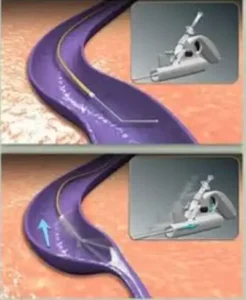
Cryo-Laser and Cryo-Sclerotherapy (CLaCs)
Cryo-Laser and Cryo-Sclerotherapy (CLaCs): This procedure causes a selective photo-thermolysis of the varicose vein wall via combining transdermal laser effect and injection sclerotherapy using a chemical sclerosant, all under skin cooling (-20°C). It is the most suitable method to treat small superficial skin spider thread veins.
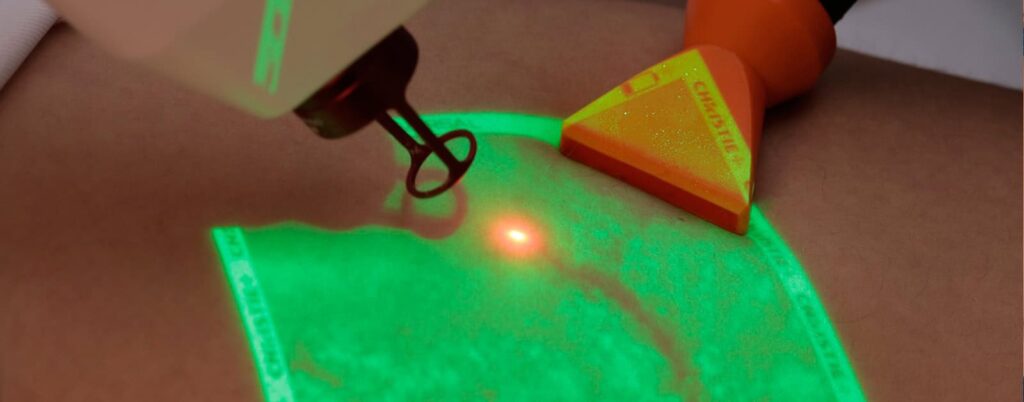
Surgical Varicose Veins Treatment Options
Whilst minimally invasive procedures handle most varicose veins cases effectively, some situations such as larger or more complex veins still require surgical intervention. These include:
Traditional Vein Stripping
Traditional vein stripping involves removing the entire problematic vein through small incisions, though this approach is less common today due to advances in minimally invasive techniques.

Micro Phlebectomy (MSA)
Micro phlebectomy (MSA) is a surgical technique where small varicose veins are removed through tiny punctures in the skin. This procedure is often combined with other treatments to address both surface veins and underlying causes comprehensively.
High Ligation
High ligation involves surgically disconnecting the problematic vein from the deep venous system, preventing blood from flowing into the varicose vein. This procedure is sometimes combined with other techniques for optimal results.
What's Right for You: Factors to Consider
FACTORS TO CONSIDER
Choosing the most appropriate varicose veins treatment requires careful consideration of multiple factors. The size, location, and severity of your varicose veins play crucial roles in treatment selection, as do your symptoms and how they impact your quality of life. Some key factors for you to consider are:
- Severity of vein disease
- Age and overall health (particularly if you have any other conditions like diabetes or heart disease)
- Treatment goals (cosmetic vs medical)
- Insurance or Medisave coverage
- Personal preference regarding anaesthesia
- Recovery time availability
Discussing these factors openly with your vascular specialist ensures you receive treatment that aligns with your expectations and circumstances.
COSTS
Costs of Varicose Vein Treatments in Singapore
Treatment costs in Singapore vary based on the procedure type, clinic setting, and extent of treatment required. To give a sense of cost, MOH has provided benchmarks on the surgeon’s fee for various varicose veins surgery, which exclude GST and other fees (e.g. facility fee, equipment fee, consultation fee).
SURGEON’S FEE RANGE (SINGLE LEG)
-
Ablation & VenaSeal S$4,900 - S$7,300
- Endovenous Laser Ablation (EVLA)
- Radiofrequency Ablation
- VenaSeal
Code: SD713V -
Ligation & Vein Stripping S$2,600 - S$4,300
- High Ligation
- Traditional Vein Stripping
Code: SD805V / SD806V -
Micro Phlebectomy Surgery S$2,600 - S$4,300
- Micro Surgical Avulsion (MSA)
Code: SD808V -
Sclerotherapy S$1,900 - S$4,300
Code: SD717V
Public Hospital vs. Private Clinic Costs for Varicose Veins Treatment
Public healthcare institutions in Singapore offer varicose veins treatment at subsidised rates for eligible patients. However, waiting times for non-urgent cases can be substantial, and treatment options might be more limited compared to private clinics.
Private clinics typically offer shorter waiting times, more treatment options, and greater scheduling flexibility. The cost difference reflects these additional services and the convenience of faster access to care.
Subsidised rates at public institutions can make treatment more accessible for those with financial constraints, though you’ll need a referral from a general practitioner and may wait several months for specialist consultation.
Consider both immediate costs and long-term value when comparing public and private options. Sometimes paying more initially for comprehensive private treatment provides better overall value through superior outcomes and faster resolution of symptoms.
DID YOU KNOW?
The Vascular and Interventional Centre is the only private vascular centre in Singapore with its own in-house operating theatre.
This allows us to offer you greater convenience, reduced facility and equipment-related fees, and minimised waiting times for your procedure.
Is Varicose Veins Treatment Covered by Insurance or Medisave?
Insurance coverage for varicose veins treatment depends on whether your condition is deemed medically necessary or purely cosmetic. Most insurance policies, including MediShield, cover treatment when varicose veins cause significant symptoms or complications.
Medisave for varicose veins treatment is available for qualifying procedures, though coverage amounts and eligibility criteria vary. Pre-approval is often required, and your doctor must document medical necessity rather than cosmetic concerns.
Purely cosmetic treatments for asymptomatic varicose veins typically aren’t covered by insurance or Medisave. However, if you experience symptoms like pain, swelling, or skin changes, coverage becomes more likely.
Check with your insurance provider and the treating clinic about coverage before starting treatment. Many clinics assist with insurance claims and pre-approval processes to help you understand your financial obligations upfront.
What Impacts Pricing of Varicose Veins Treatment?
Several factors influence varicose veins treatment costs in Singapore, such as:
- Extent of treatment required is a primary factor, treating multiple areas or severe cases costs more than addressing localised problems.
- Treatment type affects pricing, with minimally invasive procedures typically costing less than surgical options.
- Clinic location, specialist experience, and facility amenities also impact pricing.
Additional costs might include consultation fees, imaging studies, compression garments, and follow-up appointments. Understanding all potential expenses helps you budget appropriately and avoid unexpected costs during your treatment journey.
RECOVERY
Recovery, Downtime and What to Expect After Varicose Veins Treatment
Recovery from varicose veins treatment varies depending on the procedure type and your individual healing response. Modern minimally invasive treatments typically allow return to normal activities within days, whilst surgical procedures may require several weeks of modified activity.
Immediately following treatment, you might experience mild discomfort, bruising, or swelling in the treated area. These symptoms are normal and usually resolve within a few days to weeks. Your doctor will provide specific post-treatment instructions to optimise healing and results.
Most patients can return to work the day after minimally invasive procedures, though you should avoid strenuous activities for the first week. Walking is encouraged as it promotes circulation and healing, but high-impact activities should be postponed according to your doctor’s recommendations.
Long-term results from varicose veins treatment are generally excellent, with most patients experiencing symptom improvement and satisfaction with cosmetic outcomes. Following post-treatment instructions carefully maximises your chances of optimal results.

How Long Is Recovery for Varicose Veins Treatment?
Recovery timelines depend on the specific treatment you receive.
- Sclerotherapy patients: Resume normal activities within 24-48 hours. You might see some bruising or discolouration that fades over several weeks.
- Endovenous laser ablation and radiofrequency ablation: Usually require 1-2 weeks for initial recovery, though you can often return to office work within a day or two.
- Surgical procedures (e.g. vein stripping): Typically 2-4 weeks before returning to full activities.
Individual healing varies, so follow your doctor’s specific instructions rather than comparing your recovery to others.

Activities to Avoid After Treatment
Post-treatment activity restrictions help ensure optimal healing and results.
- Avoid hot baths, saunas, and steam rooms for at least a week after treatment, as heat can increase swelling and interfere with healing.
- High-impact activities like running, aerobics, or heavy lifting should be postponed for 1-2 weeks after most procedures.
- Swimming in pools or natural bodies of water should be avoided until your doctor confirms the treatment sites have healed completely.
- Prolonged sitting or standing should be minimised during the first few days after treatment.
Compression stockings are usually worn for 1–2 weeks post-procedure.
Self help tips
Self-remedies and Preventive Tips for Varicose Veins
Whilst professional treatment provides the most effective solution for existing varicose veins, several at-home strategies can help manage symptoms and prevent worsening. These approaches work best when combined with professional care rather than as standalone treatments.
Compression Stockings for Varicose Veins
Compression stockings are often the first-line treatment for varicose veins and can improve quality of life for many patients. These specially designed garments apply graduated pressure to your legs, with the highest pressure at the ankle decreasing toward the knee.
Proper fitting is crucial for compression stockings effectiveness. They should feel snug but not painful, and you should be able to put them on without excessive difficulty. Replace compression stockings every 3-6 months as they lose elasticity with regular use.
Elevating your legs above heart level for 15-20 minutes several times daily helps reduce swelling and improve circulation. This is particularly beneficial after long periods of standing or sitting.
Avoiding prolonged periods in one position helps prevent blood pooling in your legs. If your job requires extended standing or sitting, take regular breaks to move around and flex your calf muscles to promote circulation.
Exercises for Varicose Veins
Specific exercises can help strengthen your calf muscles and improve venous return. Ankle pumps, where you flex and point your feet repeatedly, can be done anywhere and help activate your muscle pump mechanism.
Calf raises strengthen the muscles that help push blood back toward your heart. Stand with your feet hip-width apart and slowly rise onto your toes, then lower back down. Repeat 10-15 times several times throughout the day.
Walking remains one of the best exercises for varicose veins prevention and management. Aim for at least 30 minutes of walking daily, which can be broken into shorter segments if needed.
Avoid exercises that place excessive pressure on your legs, such as heavy weightlifting or high-impact activities, if you’re experiencing varicose veins symptoms. Low-impact alternatives often provide similar cardiovascular benefits with less venous stress.
FAQ about Varicose Veins Treatment
How much does varicose vein treatment cost with insurance?
With insurance coverage, your out-of-pocket costs for medically necessary varicose veins treatment can be significantly reduced. Most insurance plans cover up to 80% of approved procedures after you meet your deductible, leaving you responsible for the remaining 10-20% plus any applicable co-payments.
Medisave coverage for varicose veins treatment typically provides several hundred to over a thousand dollars toward qualifying procedures, depending on the specific treatment and your available balance. Pre-approval is usually required to confirm coverage.
Total out-of-pocket costs with insurance might range from a few hundred to several thousand dollars, depending on your specific coverage, deductible status, and treatment complexity. Contact your insurance provider and the treating clinic for precise estimates based on your situation.
Is varicose vein treatment painful?
Modern varicose veins treatments are designed to minimise discomfort. Most minimally invasive procedures are performed under local anaesthesia, so you shouldn’t feel pain during the treatment itself. You might experience some pressure or mild sensations as the doctor works.
Post-treatment discomfort is typically mild and manageable with over-the-counter pain relievers. Most patients describe it as similar to muscle soreness after exercise rather than sharp or severe pain.
Surgical procedures involve more discomfort than minimally invasive options, but modern pain management techniques keep this very manageable. Your doctor will provide appropriate pain management strategies based on your specific treatment and pain tolerance.
How long does the varicose veins treatment session take?
Treatment session duration varies by procedure type and extent of treatment needed. Sclerotherapy sessions typically take 15-30 minutes, whilst endovenous laser ablation might require 45-60 minutes per treated vein. The effects of properly performed varicose veins treatment are generally permanent for the treated veins. However, you might develop new varicose veins over time due to ongoing risk factors, which is why following preventive measures remains important long-term.
CONTENTS
YOUR Preferred Health Partner
Why Choose the Vascular & Interventional Centre
We Own Our Own Hybrid Operating Theatre
Unlike many other clinics, the Vascular & Interventional Centre owns and operates our own fully equipped day surgery theatre (angiosuite). This gives you a significant advantage:
- Lower facility and equipment fees – as we do not rely on third-party hospitals.
- Faster scheduling – skip the hospital queues, your procedure can be done promptly and at your convenience.
- Seamless care – from consultation to surgery and follow-up, all under one roof.
This integrated setup allows us to offer greater cost transparency, shorter waiting times, and a smoother overall experience for patients seeking varicose veins treatment.
Highly Experienced Team with Transparent Pricing
Our team brings years of specialised experience in varicose veins treatment, having successfully treated thousands of patients with various venous conditions.
We believe in transparent pricing without hidden costs or unexpected charges. Before beginning treatment, you’ll receive a detailed cost breakdown including all anticipated expenses, helping you plan accordingly and avoid financial surprises during your treatment journey.
Our commitment to transparency extends to treatment expectations, potential risks, and realistic timelines for results. We want you to feel confident and well-informed.
